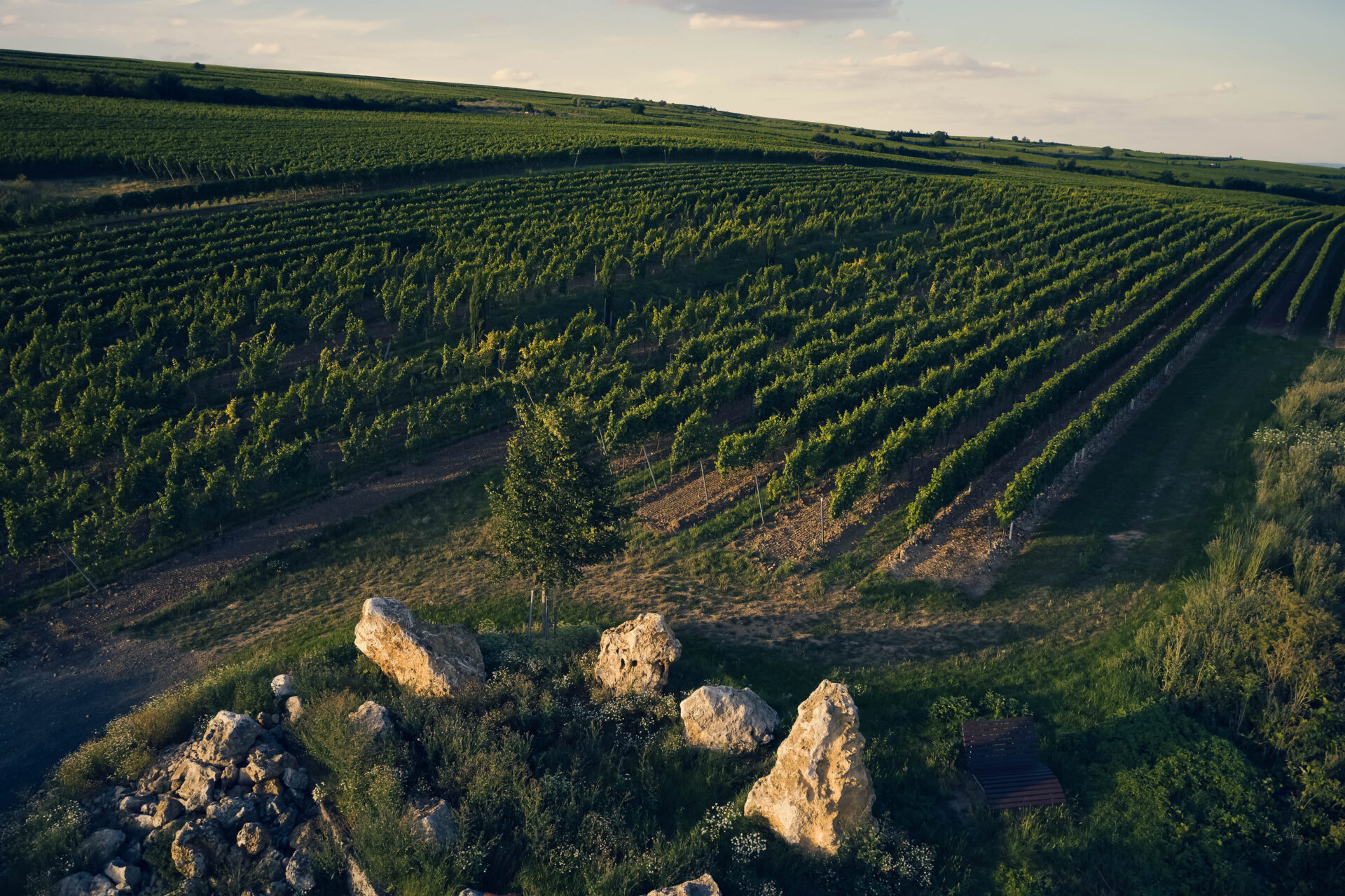
OLD VINES GUARANTEE QUALITY
Despite the mild winter, the vegetative process slowed a bit at the start of spring and bud break didn’t come until late April. After that, however, things progressed quickly. Late frosts, always a hazard, didn’t materialize and the vineyards developed speedily under summery temperatures, leading to blossoming of the vines in early June.
Precipitation became increasingly rare, and we ended up with a truly hot and dry summer with what might have been a record amount of sun.
It was impressive to see how our old vines easily handled the temperatures—very often over 30° C—bringing their grapes to ripeness. In fact, we were already testing the first berries by early August.
Our youngest vines by contrast struggled and partly required irrigation. In some cases we felt that it was necessary to thin the grapes to reduce the load on the rootstock. As a result, August of last year proved truly labor intensive.
EARLIER AND HOTTER HARVEST START, WITH A COOL FINISH
We launched harvest on September 1 with Pinot family grapes.
Things progressed quickly, although the midday warmth meant we had to take a number of extra breaks. Those first 14 days of harvest were a joy. We were astounded at the clear, fine fruit and vitality of the musts. The acidity was ripe, yet notably present.
And then came the rain! You could almost say: “Finally!”, as it had been bone dry to that point, conditions closer to Australia or the Mediterranean than an autumn in German.
The first rains evaporated even as we watched, with nature absorbing the water gratefully. We wanted to get back to work and focus on the Riesling harvest, but there were enough occasional showers to prevent ripening from really gaining speed.
So we instead used that time to do our pre-harvest on the Grand Cru sites and for a selective harvest on our younger vines. Those measures helped the remaining grapes achieve optimal quality. Day after day, we followed the Riesling grapes as they ripened, and finally harvest shifted back into high gear.
HIGH QUALITY – LOW YIELDS
The majority of our vineyards had been harvested in full by September 30. We were more than thrilled with the quality in the barrels, and on October 10 we even crowned the harvest with two beautiful Riesling Auslese wines.
From a winegrower standpoint, 2022 will remain in memory as a year of extremes. Yet at the same time, it may well represent the new normal. We are fortunate enough to have a range of opportunities even under these conditions, allowing us to look forward with confidence to our work in the coming years. Only downside are the low yields that are necessary to achieve the high quality levels we strive for.
Especially in an age of climate change, this much is clear: maintenance and care for old rootstock as well as detail-oriented vineyard work form the foundation for balance in both soils and vineyards.
